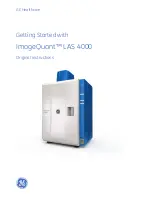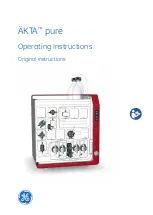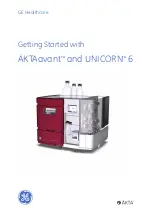
Part No. 350245 Form No. F021604A
Page 6 of 12
OPERATION
continued
16
OVERSEEDING OPERATION continued
MOW:
Mow the lawn to it's normal cut height
DRY:
Be sure grass is dry. Wet conditions can cause in-
creased damage to healty grass.
SET DEPTH:
With engine off, set the raking depth so that the
blades just touch on a flat surface (i.e. driveway, or sidewalk).
START ENGINE:
See Page 5.
ENGAGE BLADES:
Pull back on the bail on the operators
handle.
NOTE:
When engaging the blades in heavy load
conditions (i.e. heavy thatch, or very uneven turf), push down
on the operators handle lifting the front wheels slightly.
Engage the blades. Slowly lower the unit into the turf.
SLICE:
Verti-cut a small test area and examine the results.
Some thatch and cut stems should be removed and deposited
on top of the healthy grass. Grass runners should be cut and
ready for removal. If excessive damage occurs to healthy
grass, adjust the blade depth to decrease damage. Continue
raking the yard, working in one direction (i.e. north-south, or
east-west).
NOTE:
If a large drop in engine RPM occurs, or
the unit pulls you forward and bounces during operation the
blade depth is set too low.
REMOVE THATCH/STEMS:
After verti-cutting, a layer of
thatch and cut stems will be deposited over the top of the lawn.
We suggest the use of a lawn vacuum or wheeled blower for
collection and removal of the thatch/stems.
DO NOT-
Use this machine on any surface other than a lawn.
DO NOT-
Use this machine on slopes in excess of 19°.
DO NOT-
Allow persons unfamiliar with this equipment to
operate it.
DO NOT-
Allow children to operate this equipment.
RAKING/SLICING TIPS
THATCH:
Thatch is a dense layer of dead grass, clippings,
and roots that builds up over time at the base of of the lawn
preventing air, water, and fertilizer from reaching the soil.
This can cause shallow root development and make a lawn
more susceptible to drought and disease. Thatch also
provides an ideal environment for insects to hide and
multiply. Periodic removal of thatch will keep your lawn in
good health.
HEAVY THATCH:
Lawns with an excessive amount of thatch
will require multiple treatments for effective removal. Trying
to remove excessive thatch (greater than 3/4"[19 mm] deep)
in one treatment will damage or destroy the living part of the
lawn. It is best to remove heavy thatch in seasonal treat-
ments (i.e. spring, and fall).
CHECK:
Before begining, it is best to evaluate the condi-
tion of the lawn by cutting one or more core samples from
area to be treated. A core can be cut using a piece of pvc,
or metal pipe. Hammer the pipe into the ground, remove it,
push the core out of the pipe and inspect it to determine the
depth of thatch in your yard.
SLOPES:
Rake slopes across not up and down. This is
much easier and safer for the operator and is better for the
lawn. Raking across will help to reduce runoff during
watering and allow the sloped ground to hold more seed,
fertilizer, and water. The units maximum operating slope is
35% or 19°.
DEPTH:
The wide range of depth adjusment on your unit is
provided to allow for blade wear. Setting the reel deeper will
not produce better, or quicker results. The flail reel is
intended to be set so it just touches the surface on flat
ground. The slicing reel should be set even with the ground
for verti-slicing work, and set to a maximum 1/2" depth for
overseeding jobs. Setting the reel deeper than this will only
result in premature wear on the unit (i.e. failed belt). If you
desire to work the ground deeper than the above guidlines
allow, it should be done gradually in multiple passes.
Hints!
OVERSEEDING OPERATION
MOW:
Mow the lawn to it's normal cut height
DRY:
Be sure grass is dry. Wet conditions can cause in-
creased damage to healthy grass.
SEED:
Spred grass seed according to the seed suppliers
directions (e.g. 10 lbs. per 1000 ft
2
[4.5 kg. per 93 m
2
])
SET DEPTH:
With engine off, set the raking depth so that the
blades reach 1/4"-1/2"(6-12 mm) below a flat surface (i.e.
driveway, or sidewalk).
START ENGINE:
See Page 5.
ENGAGE CLUTCH:
Pull back on the bail on the operators
handle.
NOTE:
When engaging the clutch in heavy load
conditions (i.e. heavy thatch, or very uneven turf), push down
on the operators handle lifting the front wheels slightly.
Engage the clutch. Slowly lower the unit into the turf.
DO NOT-
Use this machine on any surface other than a lawn.
DO NOT-
Use this machine on slopes in excess of 19°.
DO NOT-
Allow persons unfamiliar with this equipment to
operate it.
DO NOT-
Allow children to operate this equipment.
SLICE:
Run machine over the area that has been seeded to
incorporate the seed into the soil. If excessive damage
occurs to healthy grass, adjust the blade depth to decrease
damage. Continue raking the yard, working in one direction
(i.e. north-south, or east-west).
NOTE:
If a large drop in
engine RPM occurs, or the unit pulls you forward and
bounces during operation the blade depth is set too low.
WATER/FERTILIZE:
After the seed has been worked into
the soil, water and fertilize according to the seed suppliers
directions.
VERTI-CUTTING OPERATION
This unit is equipped with a folding upper handle for easier storage
and transportation. The handle can be folded by sliding the handle
lock loops(item 28) up. This releases the upper handle, allowing it to
be folded over the unit.
FOLDING HANDLE
This unit requires two people to lift it. With the handle in the folded
position, lift holding the lower handle and belt/shaft guard one on
each side of the machine. Secure the machine in place during
transport.
HANDLING & TRANSPORTING






























